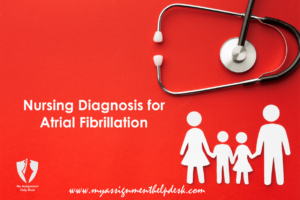Ineffective Breathing Pattern care plan
The respiratory system cannot be considered healthy when there is an ineffective airway. That is the problem that comes in when the abdominal wall and the excursion during the inspiration and expiration do not maintain an optimum level of ventilation. Ineffective breathing is exhibited when there is a state of low breathing rate, reduced depth, timing, and rhythm of breathing is altered.
Table of Contents
When the breathing pattern is altered, the body lacks proper oxygen level, which is required by the cells, which leads to difficulties and intolerance to physical activity. Appropriate management of the patients having oxygen difficulties is necessary after careful diagnosis. When making a write-up of the nursing care plan for ineffective breathing, you’ll find this article useful.
How does the Problem Manifest? / Signs and Symptoms
Ineffective breathing pattern is exhibited in different ways depending on the patient lifestyle and the severity of the condition. However, there are common signs and symptoms that get manifested by the majority of the patients:
- Inadequate ventilation due to poor inspiration and expiration
- Neuromuscular dysfunction
- Musculoskeletal impairment as well as chest wall deformity
- High level of anxiety
- Cognitive impairment
- Increased fatigue due to respiratory strain
- Obesity
- Alteration of the oxygen and carbon dioxide levels due to hyperventilation and hyperventilation
The patients should be screened by the nurse during the diagnosis process, which should aid in the formulation of the nursing care plan.
What causes an ineffective breathing Pattern?
Ineffective breathing pattern is associated with many factors as causing agents. From a dozen medical studies done, it has emerged that a weak breathing pattern is associated with chronic diseases. People with chronic illnesses are considered as normal subjects of the ineffective breathing pattern with a rate of 12L/min, which is double the medical norm for breathing people.
Modern lifestyle has been considered a significant cause of hyperventilation in people. Some of the lifestyle-related issues include mouth respiration, laziness, overeating, addiction to substances, and oversleeping. These causes tend to intensify the basal breathing of the patient and decrease the body-oxygen content.
Another factor that is associated with ineffective breathing patterns is the lack of physical exercise. A sedentary lifestyle, which is related to a lack of physical activity, leads to reduced oxygen levels in the brain. If this persists, it may lead to a decreased desire to exercise and cause more breathing problems. Lack of nutrients, which is commonly related to the consumption of junk foods, is a cause of hyperventilation.
Desired Outcome from Nursing Care
Nursing care for a patient suffering from ineffective breathing should improve the state of the patient to restore the breathing pattern and alleviate the symptoms. Some of the expectations from nursing care include management of the patient’s oxygen ventilation at the pulmonary level and ease of breathing and comfort. The nurse’s plan of care should also improve the patient’s ability to do physical activities and promote skin restoration.
Concerning the body, the acid-base balance should be enhanced, and the feeling of tissue breakdown should be eradicated. More importantly, after the nursing care, the patient should verbalize an awareness of the causative factors of the problem and demonstrate the plan of action to change the lifestyle.
Besides, the patient should demonstrate a general coping behavior by acting to avoid the causing agents of the breathing problems such as lack of physical exercises.
Nursing Plan
The nursing plan described here is based on the prioritization of tasks/ undertakings by the nurse. The specific functions in the plan of care may vary depending on the most conspicuous symptoms that are shown by the patient, but there is a consensus on the approach. This section covers three categories of the healthcare approach that includes a comprehensive care plan for patients suffering from ineffective breathing patterns.
Nursing Priority 1: identification of the Precipitating Factors
The plan of care should start with noting the signs and symptoms and the severity of the breathing inefficiency. As part of the nursing care plan, the nurse should auscultate the chest, noting the presence or character of the breath sounds and or secretions. The nurse should then review the rate and depth of the breath pattern to note any irregularities in the patterns.
Subsequently, the nurse should assist with the necessary testing that will encompass the review of the lung volumes, and pulmonary function, which helps to diagnose the severity of the lung condition. Then, an inspection of the chest X-rays should be done, indicating whether the disease is in an acute or chronic state.
Laboratory test data should be reviewed, especially ABGs, drug screens, and pulmonary function. The nurse should also consider the patient whether he/she is exhibiting emotional responses such as gasping, crying, or showing tingling fingers. The priority should end with an assessment of the discomforts that the patient is exhibiting.
Nursing Priority 2: Provision of Relief for the Causative Factors
To relieve the patient of the pain, the nurse should make efforts to normalize the breathing pattern and give a solution to the life-threatening symptoms. The plan of care to relieve the causative factors should be:
- Administer oxygen at the lowest concentration depending on the underlying pulmonary condition and respiratory distress.
- Sanction airway to clear the secretions from the respiratory system
- Make a bronchoscopy to insert the chest tube
- The patient positioning should promote maximum inspiration.
- Encourage the patient to have deeper respiration, which helps him/her to take control of the breathing.
- Have a paper bag to correct the hyperventilation.
- Assist the patient in relaxing and reducing anxiety.
- Avoid gas-forming foods that may lead to abdominal distention.
- Supervise the use of a respirator, especially when having a neuromuscular impairment.
- Maintain emergency equipment that is readily accessible in one location.
By the end of this plan of care, the patient should have some of the direct breathing difficulties addressed.
A Final Intervention
The final category of intervention encompasses wellness teaching and discharge consideration. First, the nurse should review the aetiology to get the possible scoping behaviours that he/she can share with the patient. Then, the nurse should teach the patient to consciously control the respiratory rate appropriately but not in a compelling way.
The nurse should also show the patient how to maximize respiratory effort by having a good posture and using the accessory muscles effectively. In addition, the nurse can assist the patient in learning the retain exercises through the diaphragm, abdominal breathing, and pursed-lip method. Other teachings include energy conservation and limiting fatigue through enough rest periods.
Most importantly, the nurse should point out to the patient the lifestyle causative agents that needs to be addressed through a behavioural change such as smoking.






Pingback: Nursing Diagnosis for Atrial Fibrillation | Nursing Care Plan